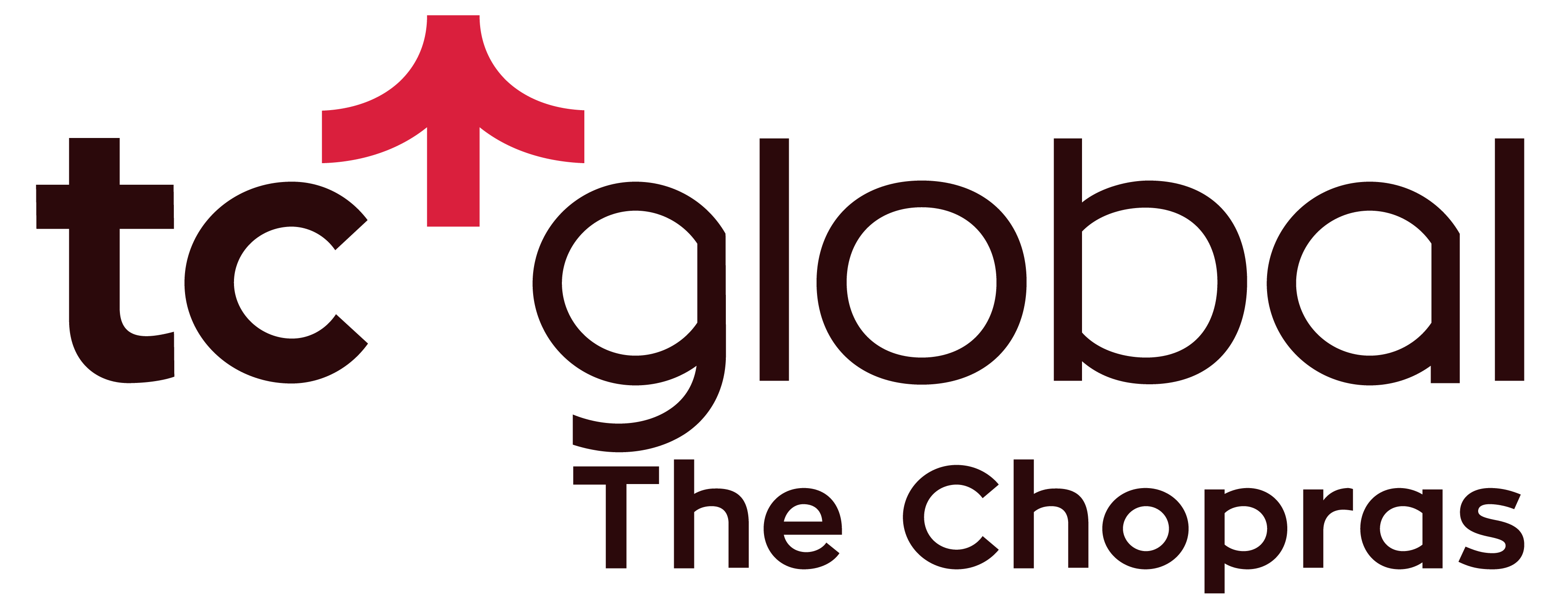If you are struggling to choose when it comes to Cornell vs Harvard, you’ve come to the right place. While both universities belong to the prestigious Ivy League group of universities, Harvard’s name, reputation, and ranking supersedes that of Cornell. However, Cornell stands out for its excellence in specialized areas of study, its suburban location, and varied funding options made available to its students.
Meanwhile, Harvard’s standing as one of the top most universities in the world in various disciplines is well known. So, what sets these two universities apart? What are the extracurricular activities available? What types of funding opportunities are available? How does the Crimson and the Big Red compare? Keep reading to find out more.
Overview of Cornell and Harvard

Harvard and Cornell are the oldest and the youngest universities among the prestigious Ivy League group of universities that include Yale, Princeton, Columbia University, Brown, UPenn and Dartmouth. They are both top tier universities that provide numerous academic and research opportunities for their students.
While Cornell is known for its engineering, agriculture, architecture programs and a few other specialised fields of study, Harvard is the world number 1 for multiple fields of study. Both schools are known for their intensive interdisciplinary programs that allow students to major in niche areas of study. Based on the distribution of the student population, it becomes apparent that Harvard focuses more on graduate studies when compared to Cornell.
When looking at its campus locations and cultures, Harvard is more urban and cosmopolitan than the more contained, rural ethos of Cornell University. In spite of their similarities and differences, both are world-class, cutting-edge research universities with an immense alumni network and famous alumni who have made their mark in history.
Brief History and Background
Cornell University
Cornell University (unofficially nicknamed the Big Red) is a private Ivy League research university located in Ithaca, New York. The university was established in 1865 and is the youngest among the Ivies. It has, since, then, risen to be one of the top universities in the country. It ranks 16th in the world and 12th in the country and is highly sought after for its programs in agriculture, architecture, veterinary medicine, hospitality management, engineering and psychology among others. One of the cutting edge centres for research, the university is a proud host of renowned researchers and scholars, expert faculty, and a vibrant student community.
Note: Cornell University and Cornell College are not the same. They are two unrelated institutions. Cornell University is the Ivy League school in Ithaca. Cornell College is a smaller private liberal arts college in Mount Vernon, Iowa.
Harvard University
The oldest institution of higher education in the United States, Harvard University (nicknamed Crimson) is a private Ivy League research university located in Cambridge, Massachusetts. Set up in 1636 as Harvard College under the authority of the Massachusetts colonial legislature; it is most renowned for its enduring history of innovation in higher education
With a reputation that rivals that of Oxford and Cambridge in the UK, Harvard has three main campuses: the main Cambridge campus centred on Harvard Yard, an adjoining campus across Charles River in the Allston neighbourhood of Boston, and the medical campus in Boston’s Longwood Medical Area.
Ranked 3rd in the country by US News and World Report and 4th in the world by QS World University Ranking, Harvard is one of the most selective and elite schools to get into. World-renowned for its faculty, state-of-the-art resources, and individualised instruction, the name is synonymous with limitless opportunities for its students.
Key Statistics and Rankings
Here is a table comparing the key stats and ranks of the two universities.
| Cornell University | Harvard University | |
| Campus | Ithaca, NY | Cambridge, MA |
| Nickname | Big Red | Crimson |
| U.S. News National Rank 2024 | 12 | 3 |
| QS World University Rank 2025 | 16 | 4 |
| Undergraduate Student Body | 16,701 | 7,063 |
| Graduate Student Body | 10,213 | ~ 18,200 |
| % of International Enrollment | ~ 24% | 26.8% |
| Average Acceptance Rate | 7% | 3% |
| Student to Faculty Ratio | 9:1 | 7:1 |
| Number of Undergraduate Programs | Over 2,000 courses in 80+ majors | 3,700 courses in 50 fields of study |
| Number of Graduate Programs | 100+ | 134 graduate and 32 professional degrees |
| Research Expenditure | Over $1 billion | Over $1 billion |
| Number of Division I Teams | 37 | 42 |
| Number of Clubs and Student Org.s | 1,000+ | 450+ |
| Colours | Carnelian Red and White | Crimson, White and Black |
Cornell vs Harvard: Academic Comparison

One of the key areas that can make a prospective student prefer Harvard to Cornell, or the other way around is academics. The undergraduate or graduate courses that they offer, their choices and flexibility, ranking, degrees and class sizes, academic calendars, research facilities and budgets can become important factors in deciding which college is best suited for you.
But before we go into the specifics, let us make one thing clear. It is natural to assume that Harvard is the obvious choice because of the reputation it upholds. However, the choice of school is so much more than a label. It is about which school gives you more opportunities to maximise your student experience and gain the most out of your duration of study. It boils down to the curriculum, individual courses that you might want to choose, the professors, and the campus culture and extracurricular activities made available to you.
Undergraduate Programs
Focus areas: One of the differences between Harvard and Cornell is how undergraduate education is structured. All bachelor’s degree students get enrolled in Harvard College, the only undergraduate school at Harvard University. All the other schools of Harvard offer graduate and other research degrees. In contrast, 9 out of the 15 main constituent colleges of Cornell University offer bachelor’s, master’s, and doctoral programs to its students. Cornell does not have one overarching undergraduate school.
Cornell also has more than twice the undergraduate student body when compared to Harvard. Between the two universities, Cornell places more emphasis on undergraduate education than Harvard. Harvard College is also known for being notoriously difficult to get into compared to Cornell. While both universities’ acceptance rates are below 10%, Cornell’s is around 7%, while Harvard’s is about a measly 3%.
At the bachelor’s level, Harvard has a more liberal arts background, with a stellar reputation for its courses for pre-med, pre-law, psychology, biological sciences, maths, literature, mathematics, African American studies, and almost every other field of study. However, when it comes to engineering, agriculture, hospitality management, and architecture programs, Cornell’s programs are considered better, with more intensive training and practical application, than Harvard’s moderately theoretical approach. Both schools also ensure that students have access to tutoring, peer learning and study groups, workshops, and counselling. Both Cornell and Harvard are also known for offering interdisciplinary programs and varied concentrations for students to explore niche areas of study.
Standardized Testing: A key difference between the two schools is their test score submission policy. Cornell became test-optional during the pandemic and continues to be so. However, for the 2024-25 admissions, Cornell is following a “test-recommended” approach for the following schools.
- College of Arts & Sciences
- College of Engineering
- College of Human Ecology
- Cornell Jeb E. Brooks School of Public Policy
- School of Industrial and Labor Relations
For students applying from Fall 2026 onwards, Cornell will also be following a test-required policy.
Harvard College already requires students to submit SAT/ ACT/ IB/ AP scores when applying for their undergraduate programs. The average SAT score for students admitted into Harvard is around 1520, while a minimum of 1470 is required to be considered for Cornell. ACT scores for both schools range between 33 and 35.
Core Curriculum: Harvard and Cornell have a marginal difference when it comes to the core curriculum. All Harvard College students are required to complete four General Education (GE) courses, one from each category – Aesthetics and Culture; Ethics and Civics; History, Societies Individuals; and Science and Technology in Society. Moreover, students must also complete the College’s requirements in the areas of language, expository writing, distribution, and quantitative reasoning with data.
In contrast, instead of a core curriculum or general education requirements, Cornell has, what’s called, distribution requirements. Instead of completing specific courses, each student must choose from a range of courses that fall into categories such as the Physical and Biological Sciences, Cultural Analysis, Historical Analysis, and many others outside of their majors. The requirements are often broad and are very diverse.
Class Sizes: Cornell has a significantly higher undergraduate population (around 16,700) than Harvard (around 7,000). Harvard has smaller class sizes, with over 76% of its classes having fewer than 20 students, while about 55% of classes at Cornell have fewer than 20 students. The student-to-faculty ratio at Harvard is 7:1, while it is 9:1 in Cornell.
Popular Majors:
| Cornell | Harvard |
|
|
Graduate Programs
Graduate Program Options: Harvard has more options and some of the highest-ranked programs in the world at the graduate level compared to Cornell. Harvard also has nearly twice the number of graduate students compared to its Ithacan counterpart. Even though both schools have over 100 options for graduate or professional studies, Harvard Law, Harvard Business School, and Harvard Medical School are at the top of their fields.
While Harvard is the higher ranked school for almost almost all fields when compared to Cornell, Cornell is not far behind. It is world-renowned for its programs in engineering, veterinary sciences, environmental sciences, architecture, computer science, biological sciences, and hotel management.
Admissions: Both universities are known for their highly competitive admissions, with students from all over the world applying. Their acceptance rates are some of the lowest in the world, ranging between 3 and 7%.
The minimum admission criteria in both universities include a valid baccalaureate degree from a recognised university (GPA varies with departments), standardized test scores (GRE/ GMAT), a strong application form with a well-written Statement of Purpose (SOP), relevant work experience (for some courses), and English proficiency test scores (for international students).
Top Graduate Programs:
| Cornell | Harvard |
|
|
Global Reputation: As mentioned earlier, both universities are world-renowned and create numerous opportunities for their graduates across continents. However, at the graduate level (masters and doctoral studies), Harvard has more options and greater worldwide renown when compared to Cornell. Be it the Graduate School of Arts and Sciences, the B-School, Harvard Law or Medicine, the Crimson is better known for graduate studies than its Big Red competitor.
Overall and Subject Ranking
| Cornell University | Harvard University |
| Overall Rank US News 2024: 12 | Overall Rank US News 2024: 3 |
| Times Higher Education WUR: 20 | Times Higher Education WUR: 4 |
| QS WUR 2025: 16 | QS WUR 2025: 4 |
| Subject and Other Ranking (Source: QS Global Subject Rankings 2024) | |
|
|
From the table, it is clear that while Cornell enjoys a relatively strong position in global and subject rankings, Harvard consistently ranks at the top for multiple disciplines. It is due to these rankings and the higher acceptance rates that Cornell has a reputation for being the easiest Ivy to get into. However, one need not necessarily place too much importance on these metrics but focus on the specific departments, their curricula, teaching styles and pedagogies, and what best aligns with your career goals when choosing your college.
Constituent Schools
The schools and colleges that constitute Cornell University are
- College of Agriculture and Life Sciences
- College of Architecture, Art and Planning
- College of Arts and Sciences
- Cornell SC Johnson College of Business
- Peter and Stephanie Nolan School of Hotel Administration,
- Charles H. Dyson School of Applied Economics and Management
- Samuel Curtis Johnson Graduate School of Management
- Cornell Ann S. Bowers College of Computing and Information Science
- College of Engineering
- College of Human Ecology
- School of Industrial and Labor Relations (ILR)
- Cornell Jeb E. Brooks School of Public Policy
- Cornell Tech (New York City)
- Cornell Law School
- College of Veterinary Medicine
- Graduate School
- Weill Cornell Medicine (New York City and Doha)
- Weill Cornell Graduate School of Medical Sciences (New York City)
- School of Continuing Education and Summer Sessions
Harvard University is composed of the following schools of which only Harvard College offers bachelor’s degree programs.
- Harvard College (Undergraduate College)
- John A. Paulson School of Engineering and Applied Sciences (SEAS)
- Kenneth C. Griffin Graduate School of Arts and Sciences (GSAS)
- Harvard School of Dental Medicine
- Harvard Business School
- Harvard Graduate School of Design
- Harvard Divinity School
- Harvard Graduate School of Education
- Harvard Kennedy School (of public policy)
- Harvard Law School
- Harvard Medical School
- T.H. Chan School of Public Health
- Harvard Extension School
- The Radcliffe Institute for Advanced Study
Research Opportunities
Both Cornell and Harvard are world leading R1 research universities that encourage their students to push the boundaries of their disciplines. Both schools spend over $1 billion for research every year.
One of the premier research institutions in the world, Harvard University has always been at the frontier of scientific inquiry and innovation. The Faculty of Arts and Sciences alone houses over 45 interdisciplinary research institutes and centres.
In addition, the other professional schools have independent research programs. Harvard Law has over 30 research programs and centres while Harvard Medical is known for its world-changing innovations. For example, here are some of the key discoveries from Harvard Medical School – Smallpox vaccine, Anesthesia, Electrocardiograph, Live donor liver transplant, Circadian clock, and the relationships between microbiome and immunotherapy. Harvard is also at the forefront of bioengineering research and collaborates with MIT for genomics research.
Likewise, Cornell is a world-class research university that emphasizes multidisciplinary research. The university has a dedicated office for research services that supports researchers all the way, from preparing a proposal to building corporate partnerships and project management. Renowned for its research in applied sciences, genomics, regenerative medicine, digital architecture, and nanosciences, the university enables a culture of research right from the undergraduate level. Ultimately, both universities foster a research mentality among their students from the get go.
Key Dates for Application
In this section, we will be looking at the key dates for application and admission into undergraduate programs (Fall semester) to get a sense of the timeline. Graduate schools have a different timeline. It is also recommended that you verify with the specific department / school that you are applying to, just to ensure they do not follow a different cycle.
| Important Dates | Cornell | Harvard |
| Early Action (EA) Deadline | – | November 1 (Restrictive EA) |
| Early Decision Deadline | November 1 | – |
| Regular Admissions Deadline | January 2 | January 1 |
| EA/ ED Decision Posted in | Mid – December | Mid – December |
| Financial Aid Application Deadline (Regular Application) | February 15 | February 1 |
| Regular Decision Posted in | Early April | End of March |
| Deadline to accept offer of Regular admission | May 1 | Early May |
| Average Acceptance Rate | 7% | 3% |
Admission Options to be considered in the Cornell Harvard debate
- Harvard’s Early Action (EA) pathway is called Restrictive EA It is restrictive in nature wherein you may not apply to an early program at any other private college or university within the United States.
- Cornell does not have an EA option but instead offers ED (Early Decision) for its students. While restrictive EA limits students from applying to other early programs in other schools, students admitted through ED are contractually bound to enrol in the university and withdraw any other application.
- Harvard accepts both the Coalition Application and the Common Application, while Cornell does not accept the Coalition Application. In both cases, the university-specific essay must be completed.
- Harvard’s application fee is $85, while Cornell requires $80.
Academic Calendar
Both Harvard and Cornell follow a semester system, with the main academic calendar spreading through Fall (August/ September – December) and Spring (January – April/ May). Both universities also have a shorter summer term during which some academic activities take place.
Cornell versus Harvard: Campus Life and Environment

Academics cannot be the sole deciding factor when it comes to choosing universities. Other aspects such as campus locations, the amenities they provide, the extracurricular activities, housing options, and the general culture of the university are key contributors to the quality of student life that can make one prefer Cornell to Harvard or the other way around.
Location
One of the primary distinctions when looking at these two universities is their location. Cornell is located in the state of New York, in the city of Ithaca, about 235 miles from New York City. Harvard is located in Cambridge, Massachusetts, a mere six miles from the city of Boston.
Harvard’s proximity to Boston provides its students easy access to a cosmopolitan city with a diverse economy and plenty of opportunities across different industries. The bustle of the Boston Metropolitan area and its population of about 4.9 million also seeps into Harvard University life. The university is also located near the renowned Massachusetts Institute of Technology (MIT), Boston College, and Boston University.
Unlike the cosmopolitan bustle of the Greater Boston area, the Ithaca campus is known for its serene locales, suburban vibe and an abundance of hiking and adventurous activities immersed in nature around the lakes. The arboretums and botanical gardens are perfect getaways for students looking to take a break from the pressure of academia. The main Cornell campus is situated upstate in the Finger Lakes region of Ithaca. However, Cornell Tech and Weill Cornell Medical School are located in New York City.
The university locations create different campus vibes and culture. Cambridge is more cosmopolitan and urban while Ithaca is known for its rural and scenic environment. The cost of living in Ithaca is also significantly lower when compared to the Boston area.
Campus Size and Facilities
When comparing total holdings, Harvard owns around 5,000 acres in the greater Boston area while the Cornell main campus alone spans over 2,300 acres in the Finger Lakes area. But, the main Harvard campus that grew around Harvard Yard is around 209 acres housing academic and research buildings.
Including the Arnold Arboretum, the Carpenter Center for the Visual Arts, the Collection of Historical Scientific Instruments, the Harvard Art Museums and the Harvard Forest, the university provides numerous extensive amenities for its students. The Harvard Library is the largest academic and private library in the world. Campus life also includes common rooms, study spaces, dining halls, verdant lawns, and athletic facilities.
Cornell provides a traditional college experience of state-of-the-art resources for academics and research, eateries, residence halls, and libraries. The campus is renowned for its natural beauty and extensive lawns. In addition to the main campus at Ithaca, the university has the Weill Cornell Medical School on the Upper East Side of NYC, Cornell Tech on Roosevelt Island, NYC, a branch of Weill Cornell in Doha, Qatar, Cornell AgriTech in Geneva, New York, the Cornell Brooks School of Public Policy in Washington DC, and the Palazzo Santacroce for the Cornell in Rome, Italy architecture program.
Student Activities and Organisations
When it comes to extracurricular activities, both universities have an extensive culture of enabling students to explore other interests beyond academics.
Athletics:
Harvard is home to 42 Division I intercollegiate teams that compete in the NCAA and the Ivy League in stunning displays of Crimson pride. Nearly 80% of Harvard undergrad students are involved in some kind of athletics. In addition to the varsity level, the university also has a longstanding tradition of intramural sports that allow students to compete with one another within the university. First-years compete for the Yard Cup, and upperclassmen chase the Straus Cup. Furthermore, Harvard students can also take part in club sports and the numerous recreational fitness options available on campus.
Like with the other Ivies, Cornell has a flourishing culture of athletics and other extracurricular activities. Unofficially called the Cornell “Big Reds”, the university has 37 NCAA Division I varsity teams and over 100 club sports ranging from archery to soccer. The Harvard-Cornell athletic rivalry, especially when it comes to men’s ice hockey is legendary. The clash of the Big Reds and the Crimson goes all the way back to 1910.
Student clubs and organizations:
In addition to athletics, the university enables over 1,000 student clubs and organizations, hundreds of community service groups, and 60 sororities and fraternities to have an active Greek life on campus. The university provides countless opportunities to pursue your favourite activities, discover new interests, refine your skills and build lifelong friendships.
Similarly, Harvard houses over 450 clubs that can be divided into 13 categories ranging from Academic and pre-professional, Creative and Performing Arts, to Public Service and Religion and Spirituality. The university also conducts a Student Organization Fair, an annual tradition that takes place the first week of class, for the freshmen to get to know options available. However, there is no Greek life system on campus.
Housing and Accommodation
Cornell: The university has numerous residence halls which provide a vibrant and diverse ethos for its students. There are also 9 program houses (also known as themed residence halls) that allow you to interact with, and immerse in a culture of shared interests. Rooms are either single, double, triples or quads for undergraduate students. Grad students, especially those with family, have a wider range of housing options to choose from.
Freshmen and second year undergraduate students are required to live on campus and take up a meal-plan. Around 55% of Cornell undergraduates live on campus for all 4 years of study.
Harvard: For undergraduate students at Harvard College, accommodation is provided in dorms with shared suites adjacent to Harvard Yard with a majority of meals eaten in Annenberg Hall. First-year students are required to live on campus. Divided into “The Houses”, they serve as the foundation for the undergraduate experience at Harvard College. 98 per cent of all undergraduates live in one of the twelve residential Houses.
Graduate students can access housing options on campus in Harvard-owned properties or off campus in the Cambridge and Boston area. Harvard University Housing (HUH) is the office that offers housing and real estate services to the University’s graduate students, faculty, and employees. The university owns about 3,000 units ranging from studios to four bedrooms, all located conveniently near Harvard’s graduate and professional schools.
Both universities also have over a dozen dining halls with numerous meal choices. They are also known for their food-related events, ranging from street food to global gastronomical experiences. Both schools support and encourage students to participate in food sustainability and food literacy initiatives as well. The average figures denoting the cost of housing and food are mentioned in the following section, along with other expenditures.
Cornell vs Harvard: Financial Aspects
Another major point of discussion when it comes to Harvard vs Cornell is the cost involved. The cost of attendance (tuition), additional expenses such as books, student fees, insurance and housing must be taken into account before making a choice.
At the outset, both are privately owned universities and, therefore, do not offer any subsidised rates for local residents. Moreover, the general cost of tuition is higher than that of public universities. That said, both universities are known for their highly inclusive financial aid programs.
| Annual Rates | Cornell | Harvard |
| Tuition (Bachelor’s) | $68,380 | ~ $57,000 |
| Tuition (Master’s, not including professional programs) | $44,768 – $85,376 | $55,000 – $64,000 |
| MBA Tuition | $83,106 – $129,918 | $76,410 |
| Housing (On-Campus) | $12,296 | $12,922 |
| Food (Meal Plan) | $7,132 | $8,268 |
| Off-Campus Housing | $6,300 – $18,000 | $8,300 – $30,000 |
| Types of Financial Aid | 1. Grants and Scholarships 2. State and Federal Grants 3. Work Study 4. Loans |
1. Scholarships & Grants 2. Outside Awards 3. Student Employment 4. Loans |
| International student scholarships |
|
|
| Estimated average grant for an aid student | $55,325 | $67,585 |
| Admission Decisions | Need aware for international students | Completely need blind |
| Demonstrated Need Cover | 100% (Families with income less than $60,000 are assigned a $0 parent contribution) | 100% (Families with income less than $85,000 will not have to pay tuition) |
Here are a few important points to be kept in mind.
- As private Ivy League Universities, the tuition rates at both universities are much higher compared to other private or public universities. That said, both have numerous scholarship and financial aid options. It is important to research specific scholarship options for the program/ department that you are applying for.
- The tuition fees are average figures, calculated for a typical academic year of 9 months. The fee will be higher should you choose to take extra courses in the summer months.
- The tuition fee amounts in the table are indicative of only the cost of attendance. It does not include books, student health insurance and other expenses. Student insurance alone can cost between $3,000 – $7,000 a year.
- Both universities offer only need-based scholarships. Merit scholarships are typically funded by external sources. Neither university offers athletic scholarships.
- International students are not eligible for any state or federal aid.
- Cornell is also need-aware for international students. Applying for financial aid can factor into admission decisions for international students.
Cornell vs Harvard: Career Prospects and Alumni Network
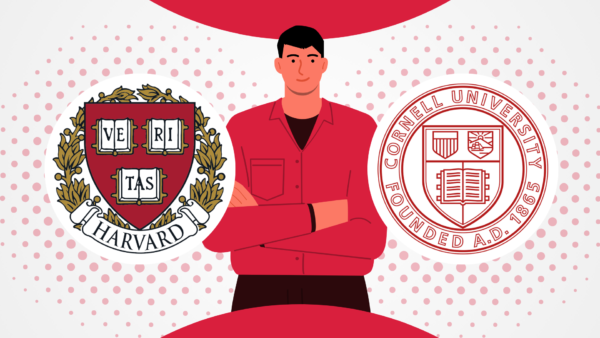
This section compares the post-graduation opportunities available to the students of Harvard and Cornell. Considering their reputation, their academic ranking, and their status as Ivy League universities, a significant problem for a Cornell or a Harvard graduate is to choose from the numerous options that their university degree will open up for them. The academic rigour and culture of research in these two universities create a pedigree that recruiters often compete to get for their organisations.
Employment Rates
As one of the top colleges for graduate employment in the US, according to the Times Higher Education ranking, Harvard, ranked 4th in the US, has an employability rate of 91 – 96%, depending on the school, within six months of graduation.
By the same metric, Cornell stands 21st in the country for graduate employability with a rate of 93% within 6 months of graduation. A diploma from the Ivies is the closest one can come to guaranteed competitive employment, irrespective of the discipline.
Notable Alumni
Both universities have vibrant alumni associations that extend worldwide. Harvard’s alumni network supports over 400,000 people who bleed crimson in over 200 countries while Cornell has over 250,000 living alums across the globe.
If you are comparing Nobel Laureates as a mark of academic excellence, Harvard is associated with over 160 Nobel Prize Winners (over 50 of them currently associated with the university) while about 50 are associated with Cornell.
Other Notable Alumni from Harvard
- Barack Obama, Former President of the United States
- Mark Zuckerberg, CEO, Meta
- Bill Gates, Founder, Microsoft
- John F Kennedy, Former President of the United States
- Ratan Tata, Industrialist and philanthropist
- Robert Oppenheimer, Physicist
- Helen Keller, Author and activist
- Ruth Bader Ginsberg, Associate Justice of the Supreme Court
Notable Alums of Cornell
- Anthony Fauci, Physicist and Immunologist
- Toni Morrison, Author
- Kurt Vonnegut, Author
- Bill Nye, the Science Guy
- Norbert Wiener, Computer Scientist
- Willis Carrier, Inventor of modern air conditioning
- Harold Bloom, Literary Critic
Career Services
In both universities, the career centers for strategy and success assist their students to gain practical experience, build networks and communicate their aptitudes and skill sets to prospective employers. They also play an instrumental role in building leadership skills and specialised skills that are essential to a workplace.
In both universities, the career centre connects students to internship opportunities and prospective employers through seminars, job fairs, and numerous other on-campus events. Their goal is to clarify career aspirations, identify opportunities, and offer support at every stage of career development.
Conclusion
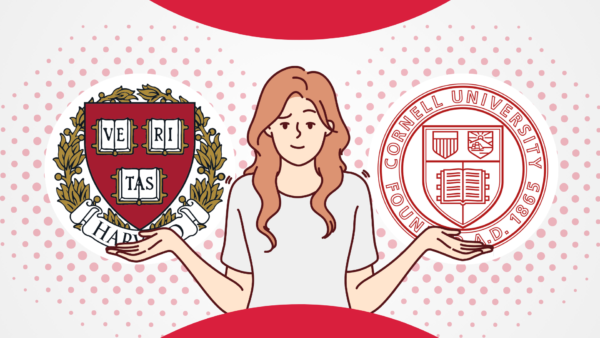
Deciding on Harvard and Cornell involves considering multiple aspects, including academic strengths, campus life, financial implications, and career prospects. Both universities offer unparalleled opportunities, but ultimately, your decision must align with your personal and professional goals.
Despite being Ivy League schools, Harvard and Cornell offer diverse student experiences, being the oldest and the youngest of the Ivies.
- With both universities belonging to the prestigious Ivy League group, they share a similar standing and a global reputation of being some of the top most universities in the world. That said, Harvard’s reputation and standing is significantly higher than that of Cornell. Cornell being the youngest Ivy continues to be on a path of growth and development, as it slowly rises in ranks among global universities.
- Cornell has a greater undergraduate population while Harvard focuses more on graduate education.
- While Harvard consistently tops the list of universities in varied disciplines, Cornell is a world leader in some disciplines including engineering, veterinary sciences, architecture, hotel management, and agriculture.
- Even though Cornell is considered to be one of the easiest Ivies to get into, their acceptance rate is as low as around 7%. Harvard admissions are one of the hardest in the world, with the university maintaining an acceptance rate of around 3%.
- Cornell is currently on a test-optional policy but will become “test required” from Fall 2026 for undergraduate college admissions. Standardised tests such as ACT/ SAT are already required to apply to Harvard College.
- Looking at locations, Cornell is decidedly more suburban and contained when compared to the urban Boston-Cambridge neighbourhood in Massachusetts. However, since both are situated in the northeastern part of the USA, they have relatively similar climates.
- Even in terms of the campus culture, Cornell is known for its ‘work hard and play hard’ vibe, while Harvard can be intensive for some students.
- Both universities offer varied scholarships and housing options for their students. Both universities require freshmen and second-year years to live on campus.
- Both are world-class research universities with annual research budgets exceeding over $1 billion.
Considering their similarities, the ultimate call rests on whether the course curriculum and the learning outcomes meet your career plans. The most significant part of your research is to compare courses, syllabi, electives, faculty and research facilities of your preferred degree program, speak to current students, and then decide depending on which school better suits your needs.
We understand that becoming an international student can be very thrilling, but the prep and paperwork of it all can get overwhelming. The easiest way to reduce your stress is to sign up with TC Global.
We simplify international education, learning, and mobility through connecting students, universities, and a global community on a single platform where there are over 1000+ education providers and over 80,000+ courses.
Our platform enables students to study anywhere in the world in just a few steps. From search and discovery and finding the right course fit for you, to applications, visas and departure – we see you through it all.
To move forward with us, download our app or visit tcglobal.com and sign in to create an account on our student platform and onboard with us in quick, easy steps.! ?
Then simply set up a visit Calendly.com/tcglobal to pick a Relationships Team closest to you and choose a slot to meet with a Relationship Member. Be it Cornell vs Harvard or any such debates, our experts will be with you every step of the way to help you decide.
Let’s shape your future together.
FAQs
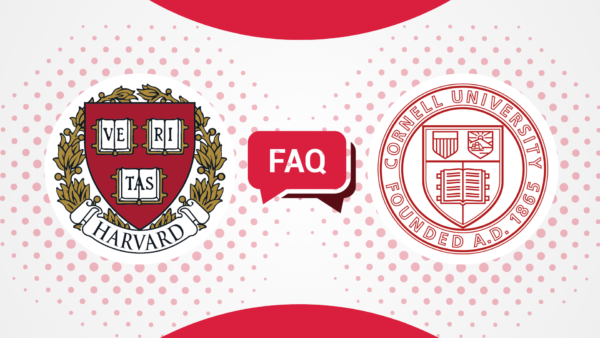
Is Cornell top of the Ivy League?
Cornell University is ranked 12th in the country according to the rankings published by the U.S. News and World Report. It is the best Ivy League school for engineering.
Is Cornell considered prestigious?
Yes, Cornell is a prestigious institution, and its status as an Ivy League institution adds to its reputation.
Is Cornell the easiest Ivy?
The sense of the term “easy” varies with each student. However, Cornell is often considered the easiest Ivy to get into due to its acceptance rate of 7%, which is higher than the other Ivies. The tag of “easy Ivy” also comes with it being the youngest Ivy school.
Are Harvard and Cornell rivals?
Cornell and Harvard are fierce rivals, especially when it comes to athletics. Crimson and Big Red Ice Hockey teams have met more than twice each season.
Which Ivy is the most prestigious?
While all Ivy Leagues are reputed in their own way, Princeton ranks first in the country for undergraduate education. At the graduate level, Harvard has some of the most world-renowned degrees.
Is Harvard ranked 1?
Harvard ranks third in the country (US News and World Report 2024) and fourth in the world (QS World University Ranking 2025).
What GPA do you need to get into Harvard?
For all Ivies, a minimum of 4.0 or higher on a scale of 5 is required, considering how competitive their admission processes are.
How much is Harvard tuition?
Undergraduate tuition at Harvard is around $57,000 per year, not including books, accommodation, food, and other expenses. At the graduate level, tuition alone can cost anywhere between $55,000 and $75,000 per year.
Can I get a 100% scholarship to Harvard or Cornell?
Both Cornell and Harvard meet 100% demonstrated financial need of students, irrespective of their immigration status. Demonstrated financial need is the difference between the Cost of Attendance and your Expected Family Contribution. However, Cornell is need-aware for international students. For families earning less than $60,000 per annum ($85,000 for Harvard), family contribution is zero.
You May Also Like
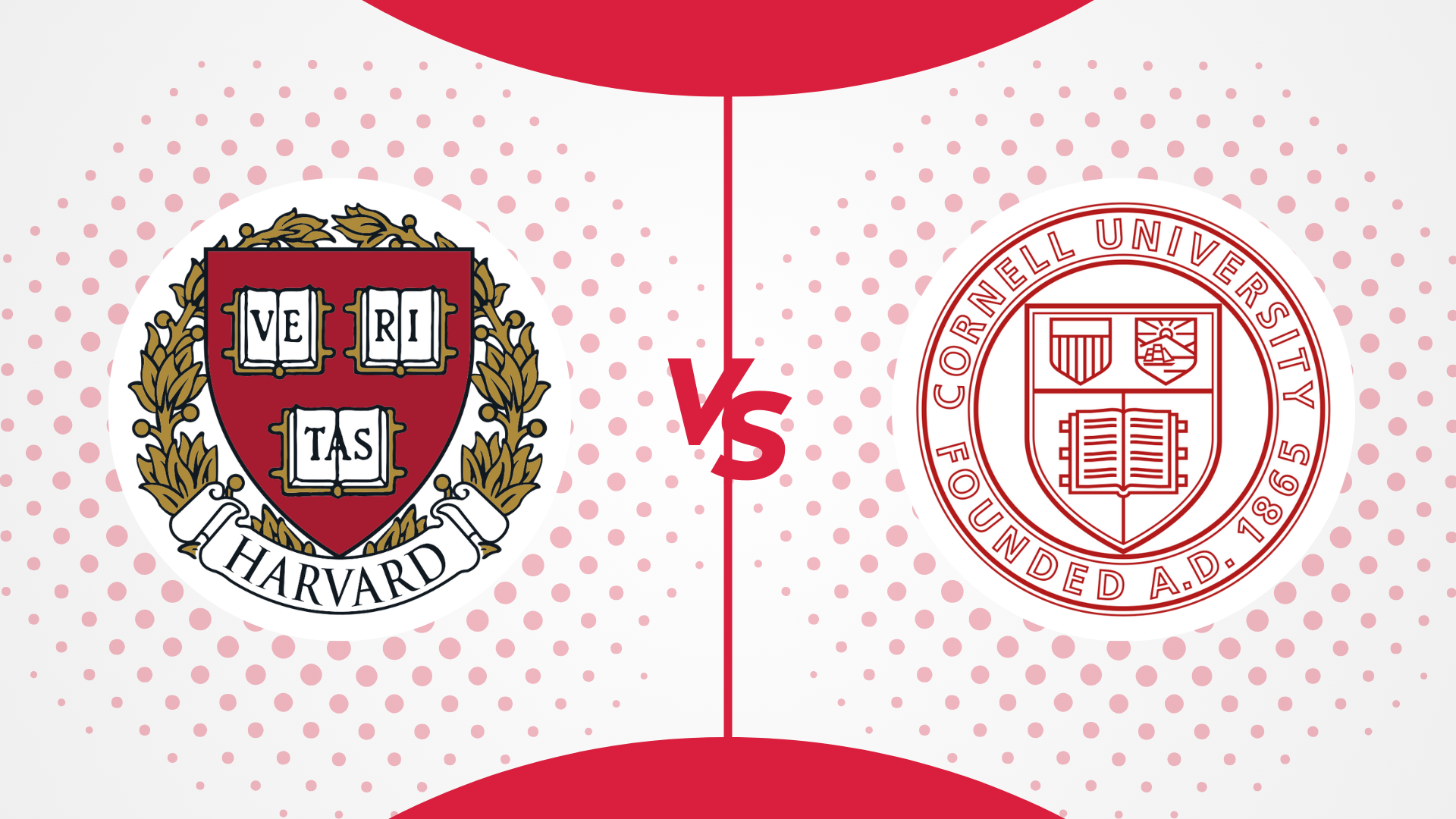
Compare more universities in USA
-
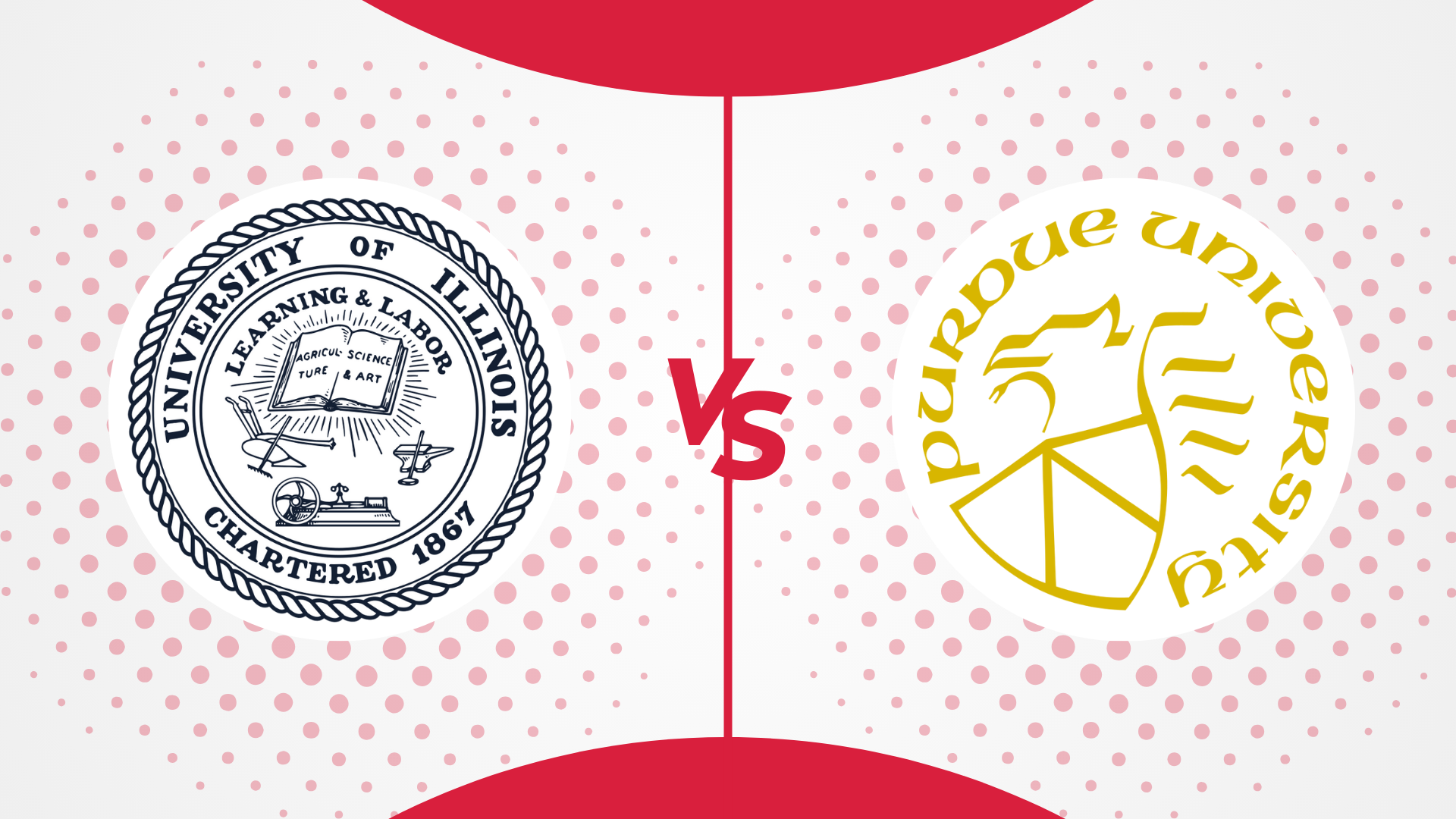
Purdue vs UIUC: How Do They Compare in 2025?
December 16, 2024 -
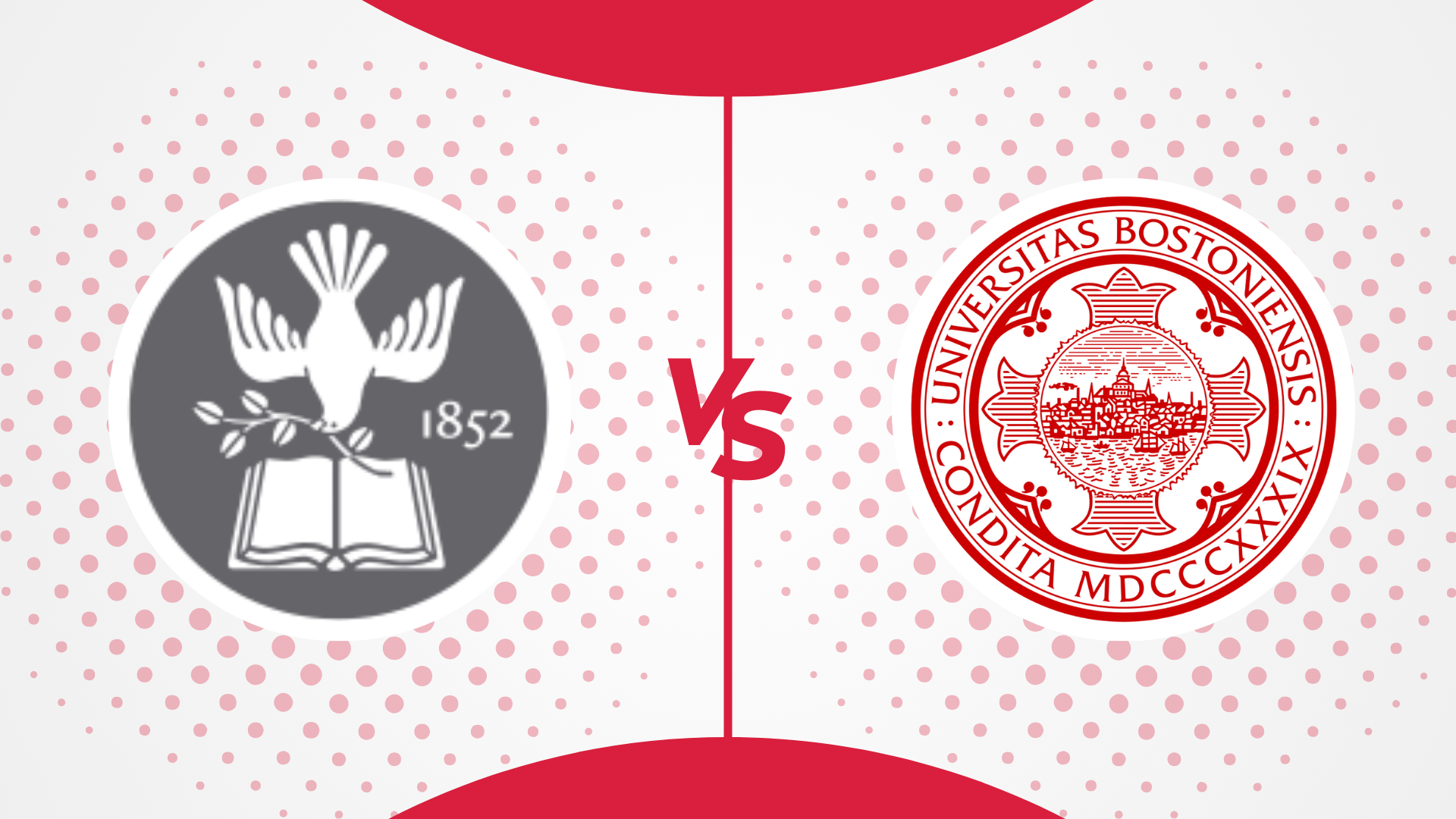
Tufts vs BU: How Do They Compare in 2025?
December 16, 2024 -
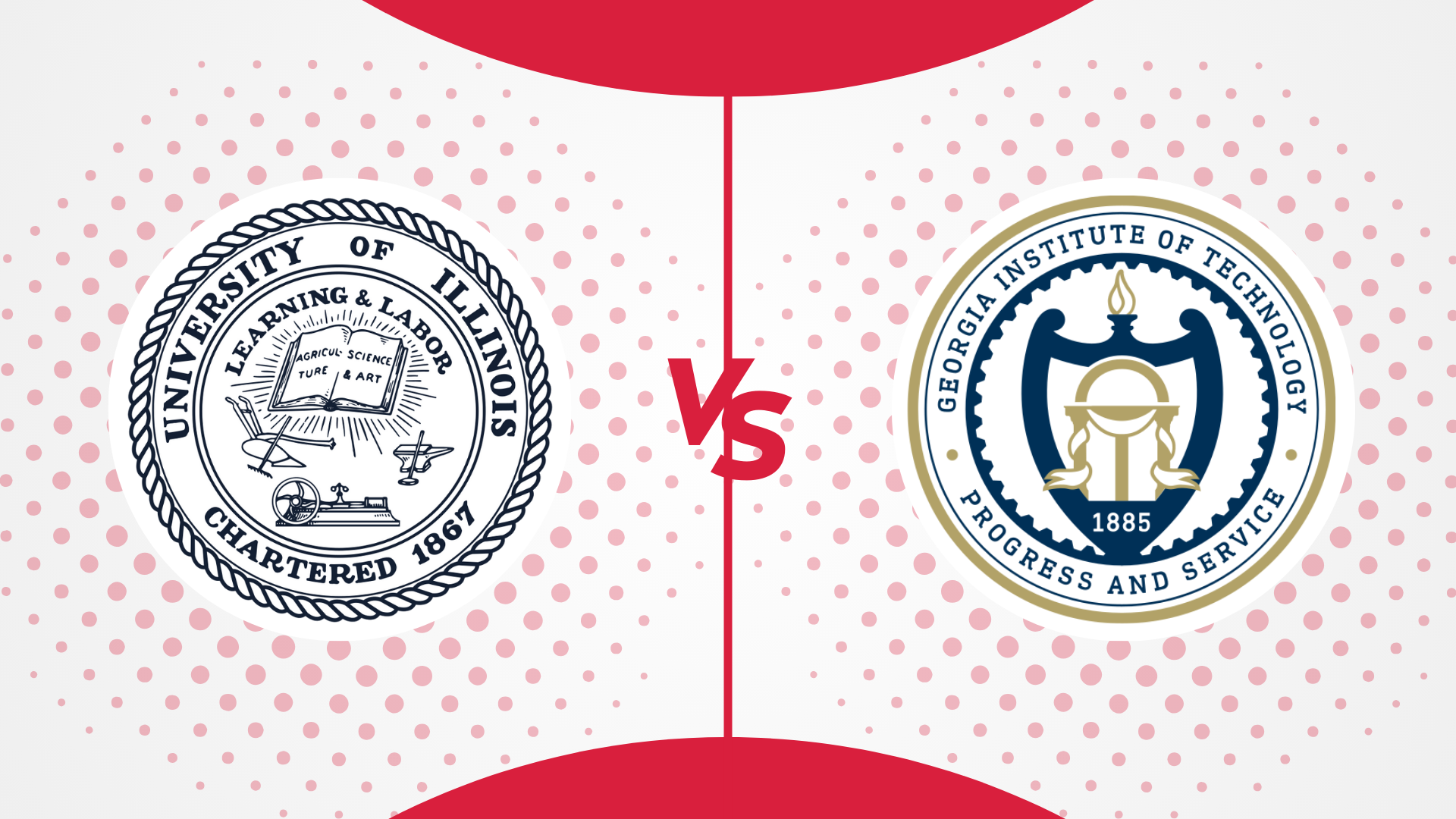
UIUC vs Georgia Tech: How Do They Compare in 2025?
December 3, 2024 -

Georgia Tech vs UT Austin: How Do They Compare? [2025]
September 24, 2024 -

UC Davis vs UC Irvine: How Do They Compare in 2024
September 10, 2024 -
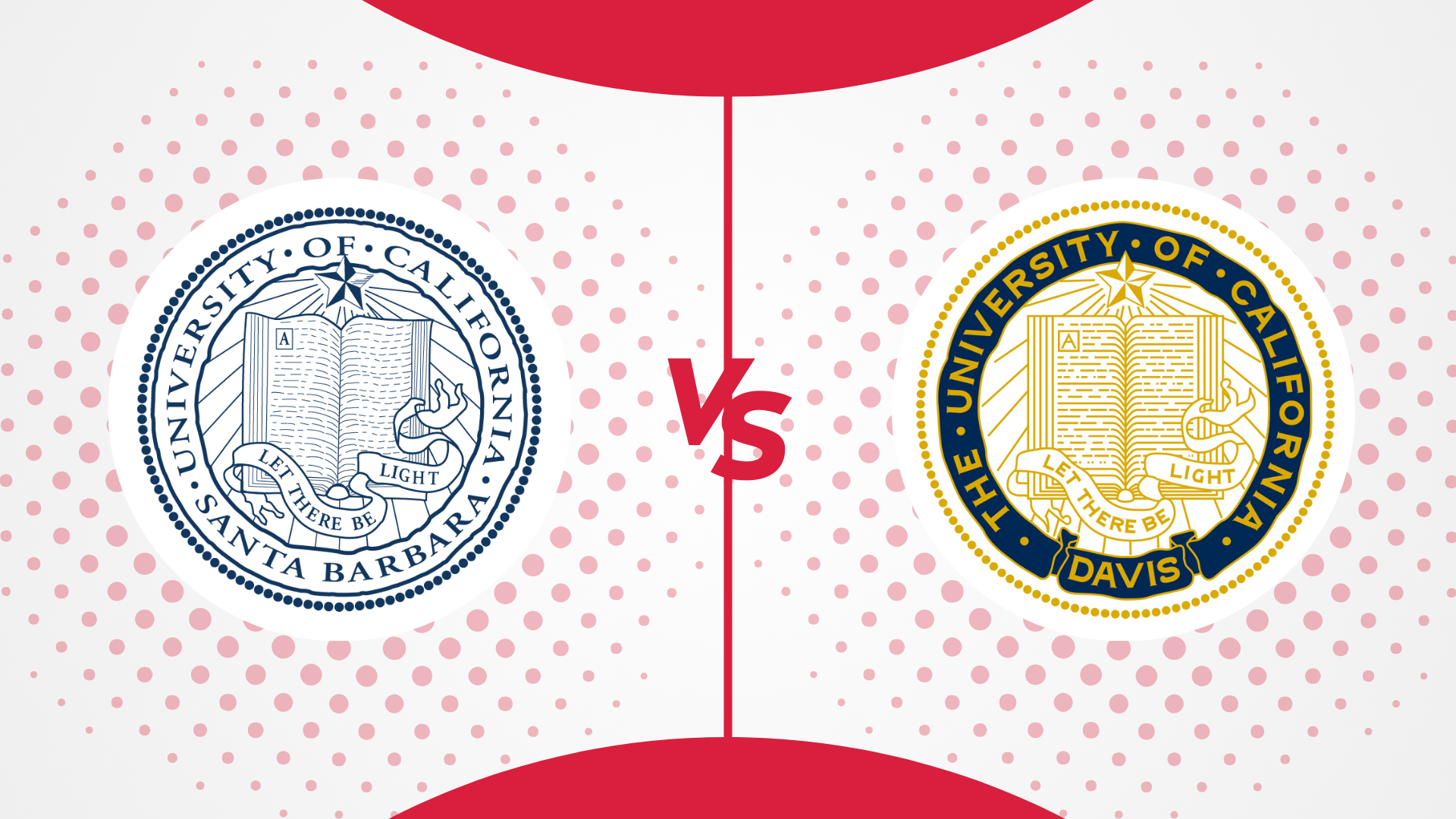
UC Santa Barbara vs UC Davis: How Do They Compare? [2024]
August 30, 2024 -

UC Davis vs Santa Clara University: How Do They Compare? [2024]
August 23, 2024 -

University of Chicago vs Northwestern University: How Do They Compare
August 20, 2024 -

Georgia Tech vs MIT: How Do They Compare? [2024]
August 7, 2024 -

Caltech vs MIT: How Do They Compare [2024]
August 2, 2024 -

MIT vs Harvard: How Do They Compare [2024]
July 27, 2024 -

Yale vs Harvard: How Do They Compare [2024]
July 22, 2024 -

Harvard vs Princeton: How Do They Compare [2024]
July 16, 2024 -
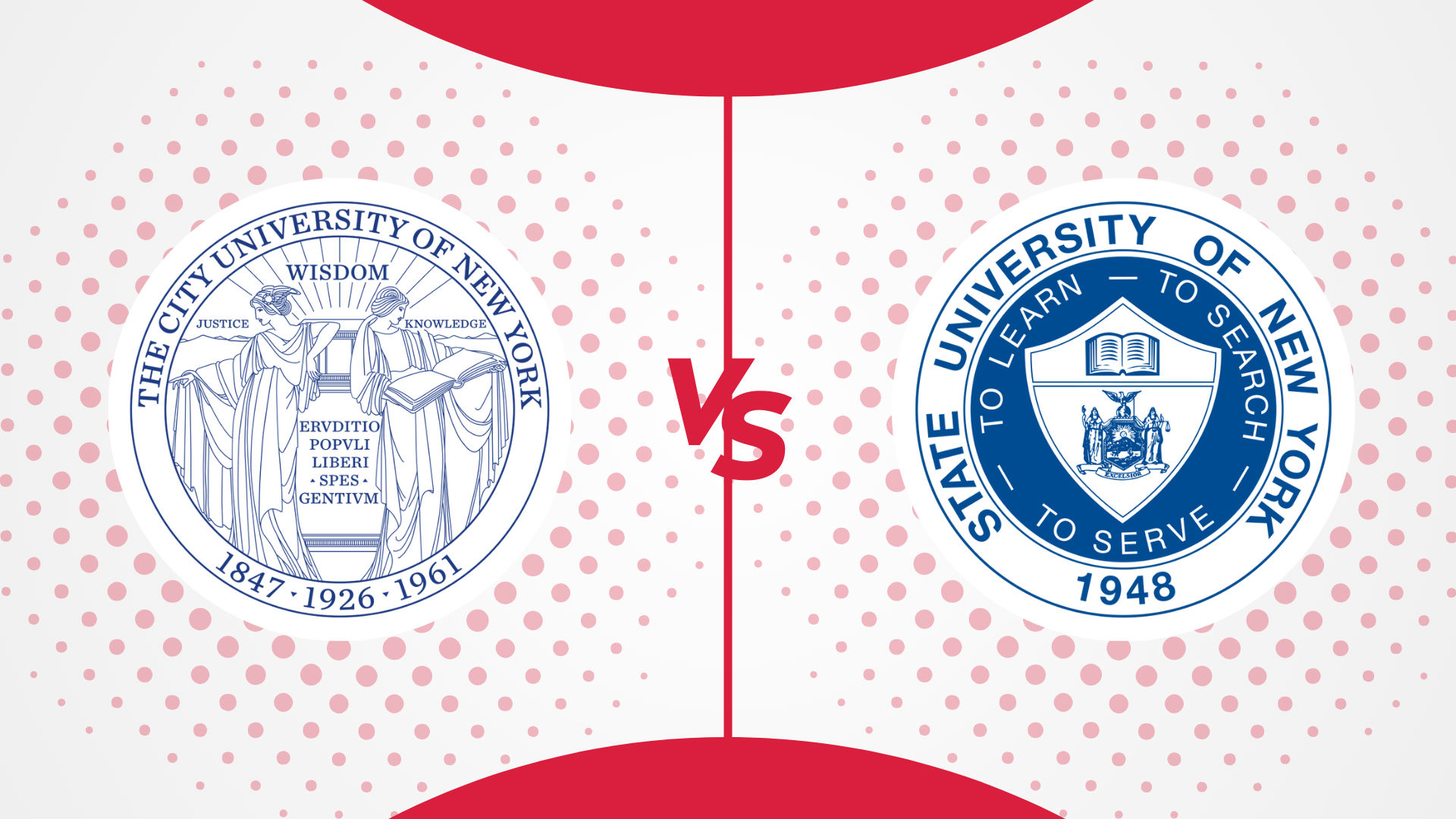
CUNY vs SUNY: Which One is For You in 2024
July 9, 2024 -
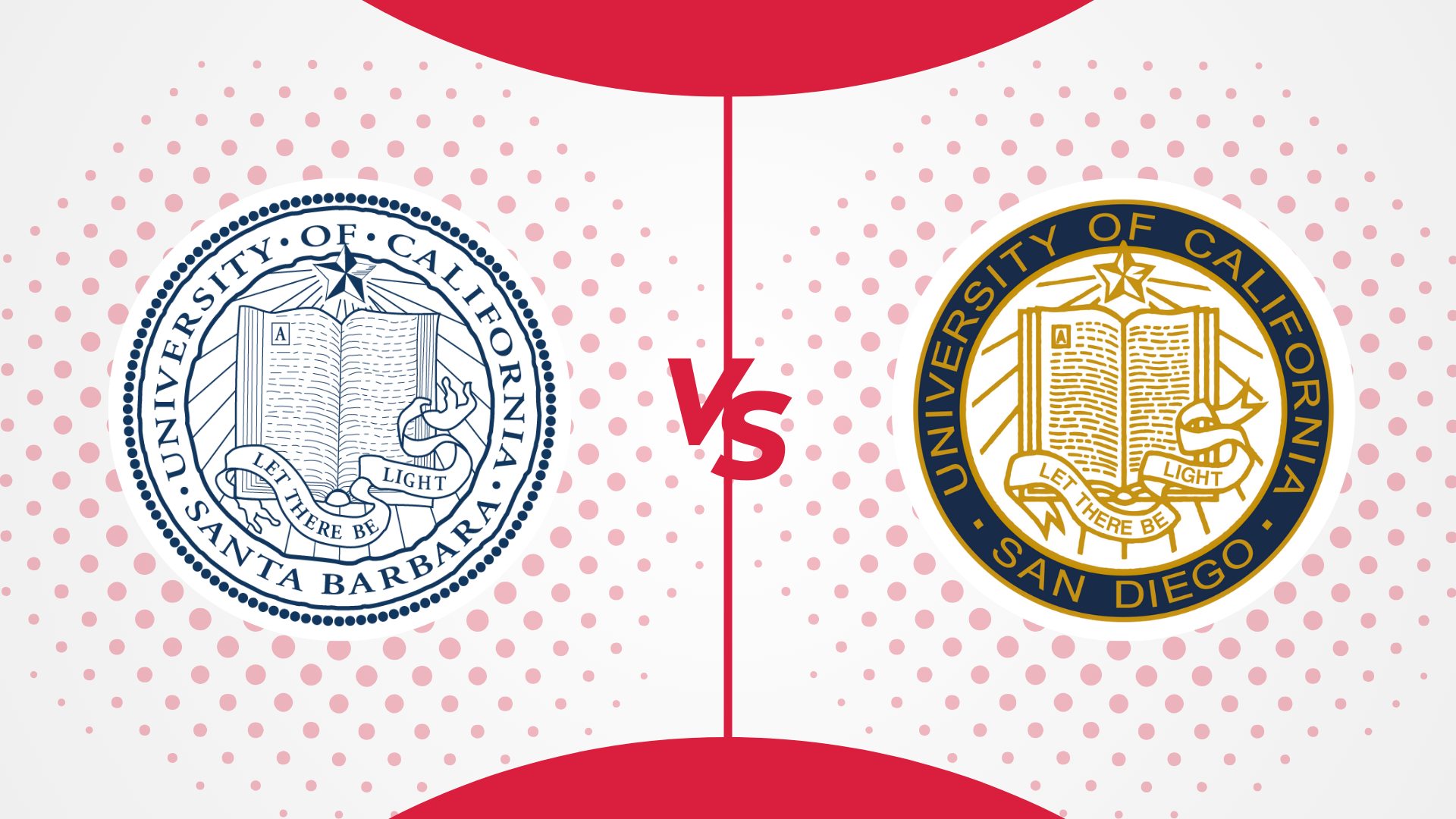
UCSD VS UCSB: Which One is Better For You in 2024
July 9, 2024 -
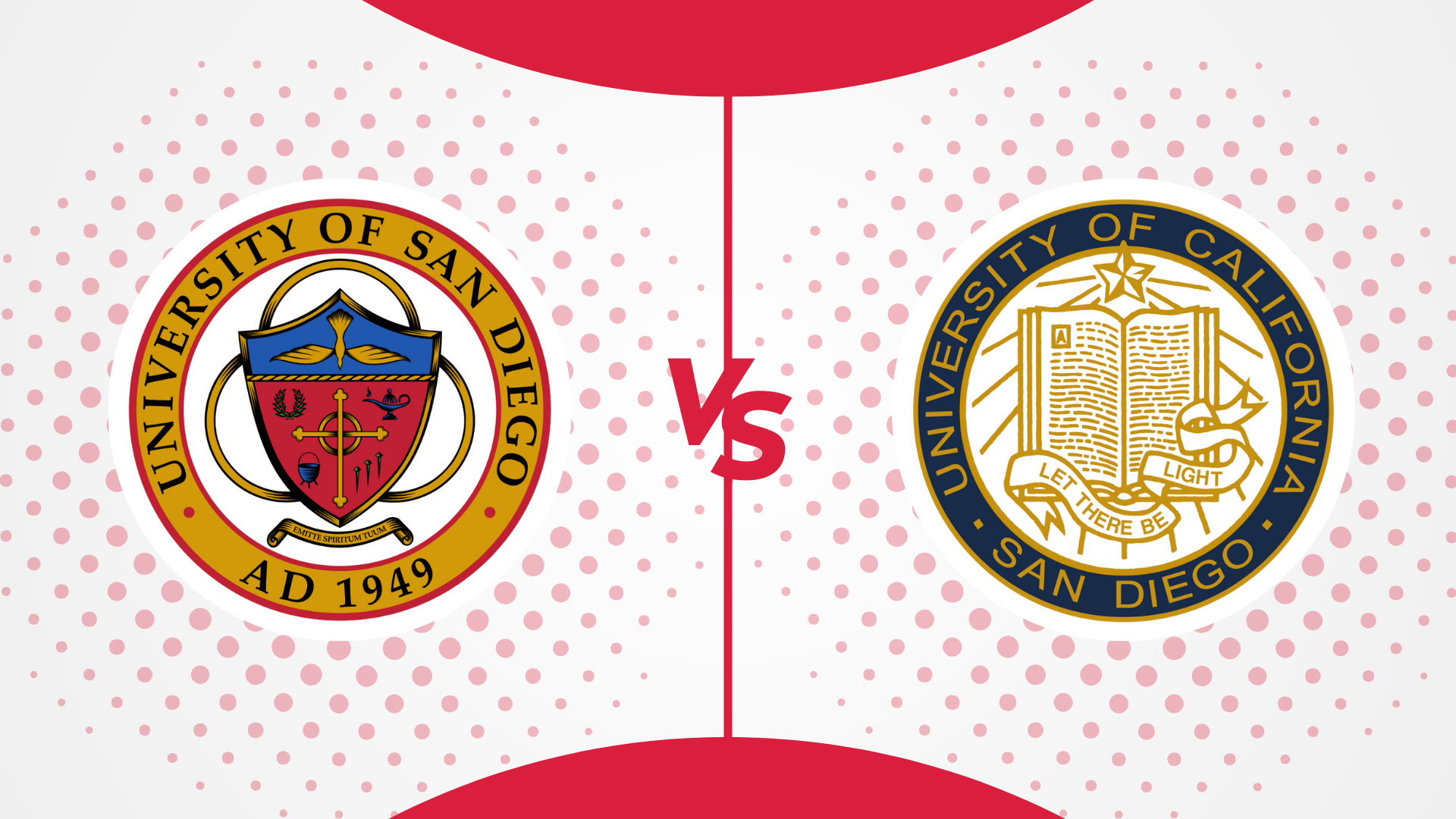
USD vs UCSD: Which one should you choose in 2024?
July 9, 2024 -
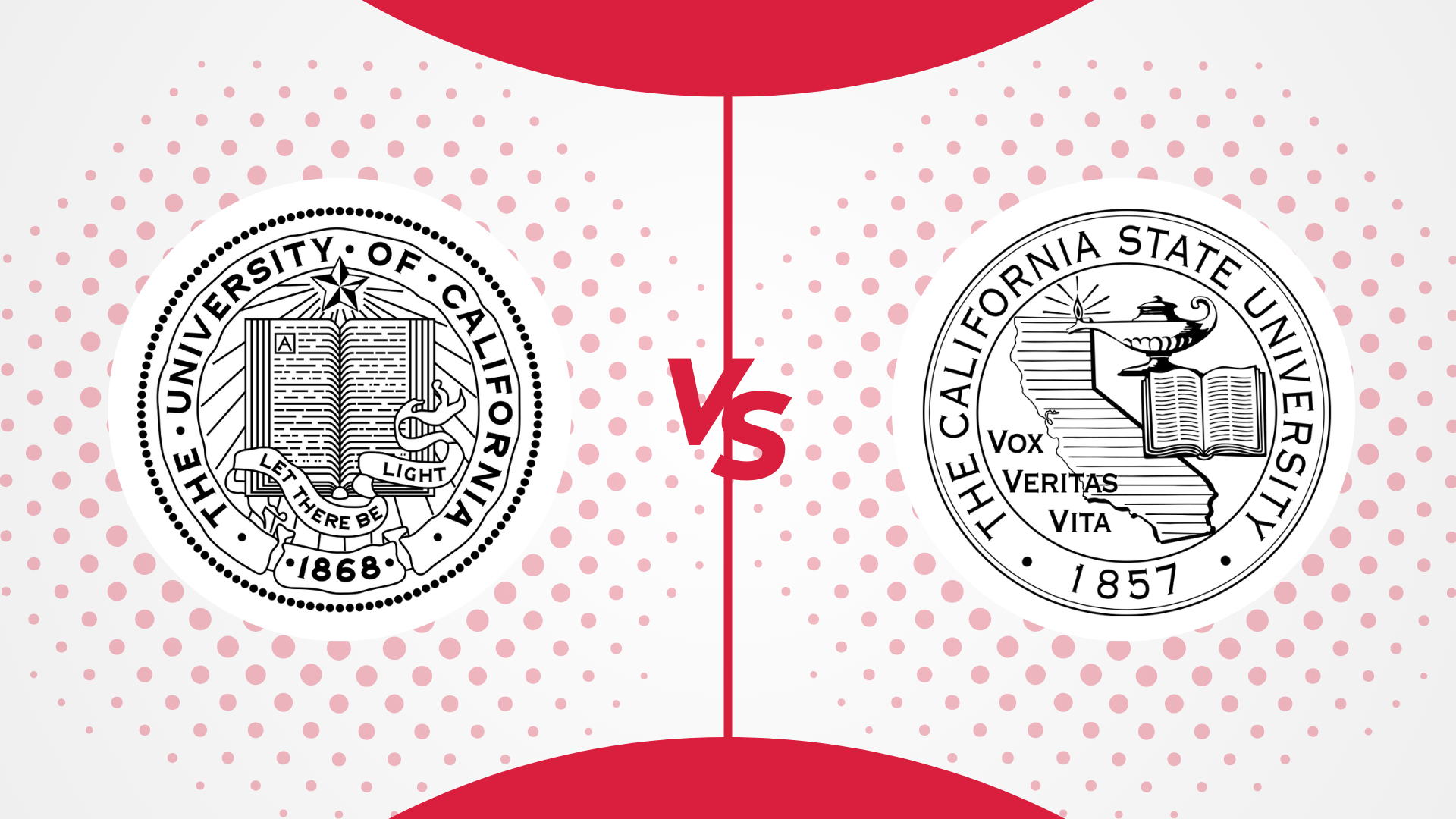
UC vs CSU: Which One is Better in 2024?
July 9, 2024 -
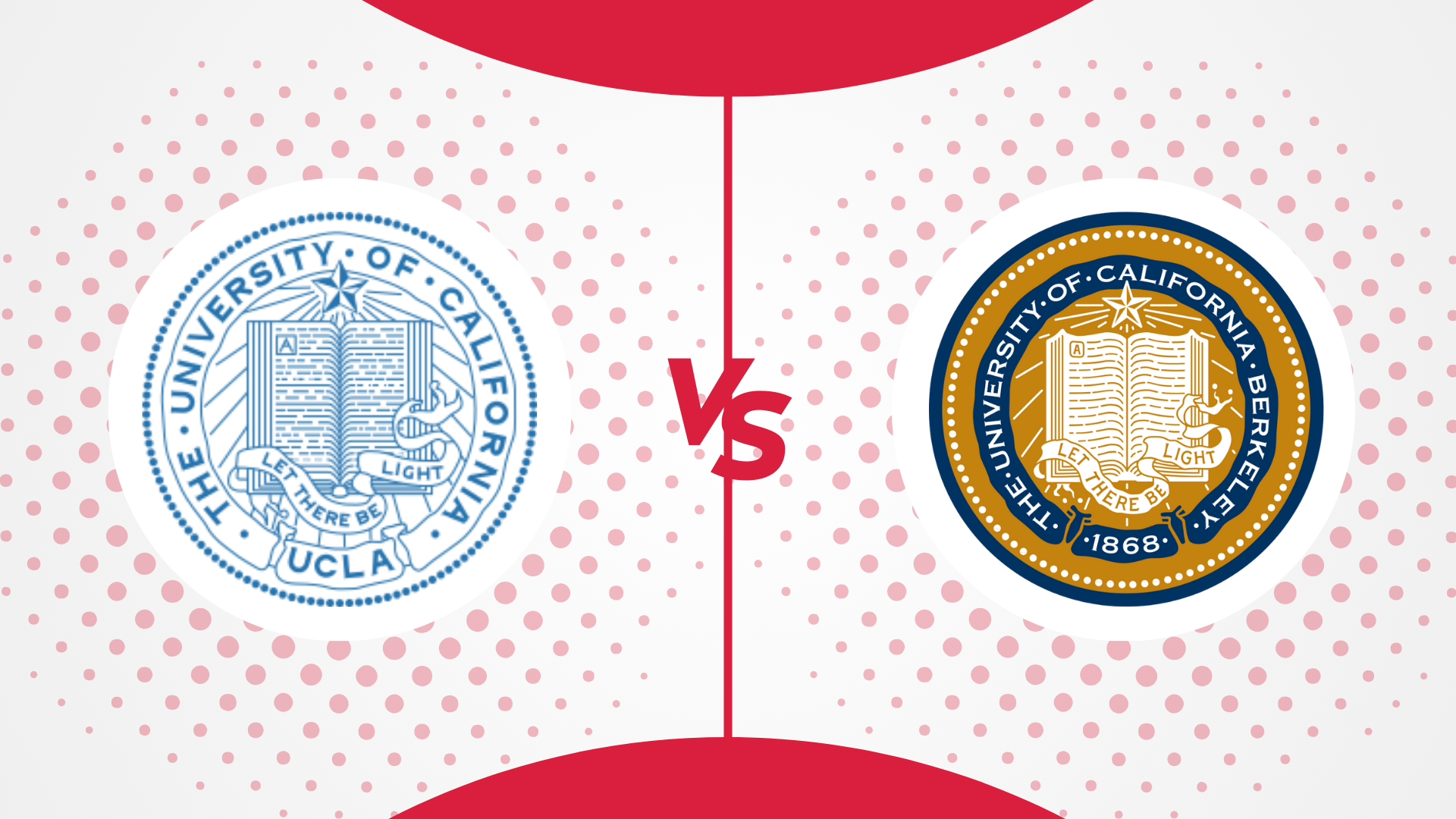
UCLA vs UC Berkeley: Which One is Best in 2024
July 9, 2024 -

University of Arizona vs Arizona State University: Which One is Better in 2024
July 9, 2024 -

Penn State vs UPenn: Which is Better for International Students in 2024
July 9, 2024 -

Northeastern vs Northwestern: Which One is Best in 2024
July 9, 2024 -

Northeastern University vs Purdue University – Which One is Better in 2024?
July 9, 2024 -

Boston College vs Boston University: Which One is the Best in 2024?
July 9, 2024 -

LSU vs UCLA: Which Is Better For You In 2024?
July 8, 2024 -

NYU vs Boston University: Which One Is Better For You In 2024
July 8, 2024 -

USC vs UCLA: Which One Is Better For You In 2024?
July 5, 2024 -
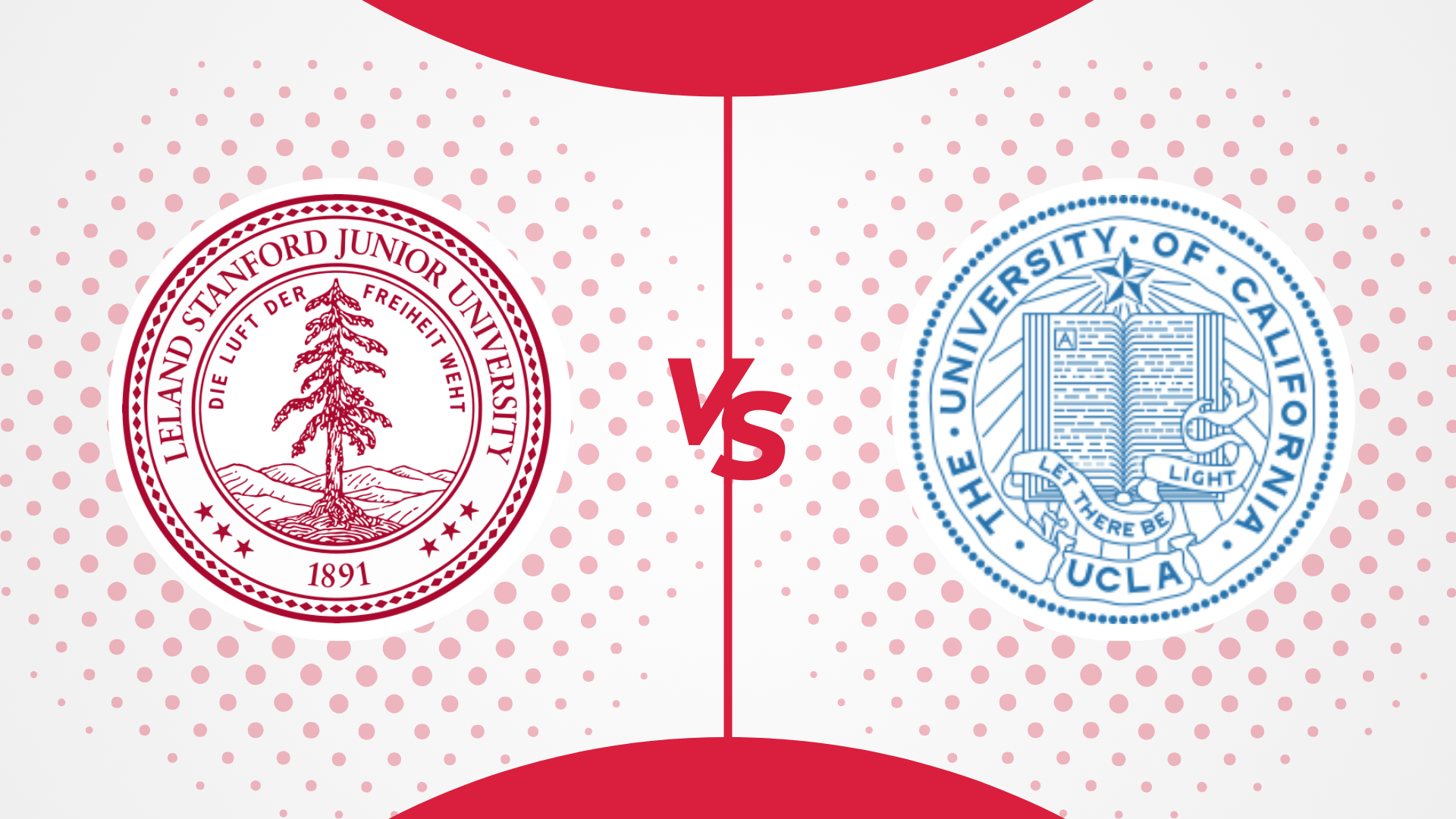
Stanford vs UCLA: Which One is Better For You in 2024
June 28, 2024 -
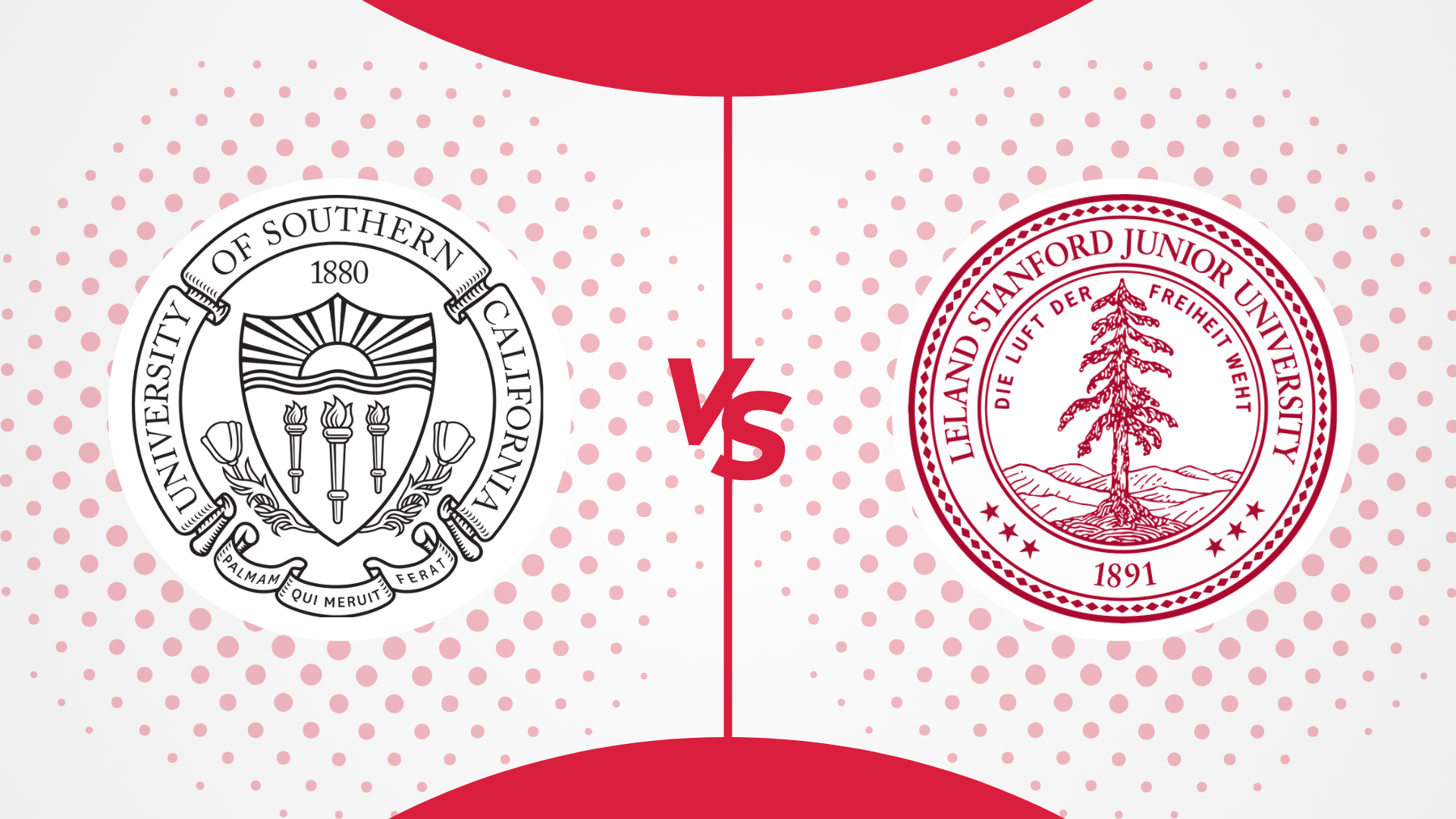
USC vs Stanford: Which One is Better For You in 2024
June 28, 2024 -
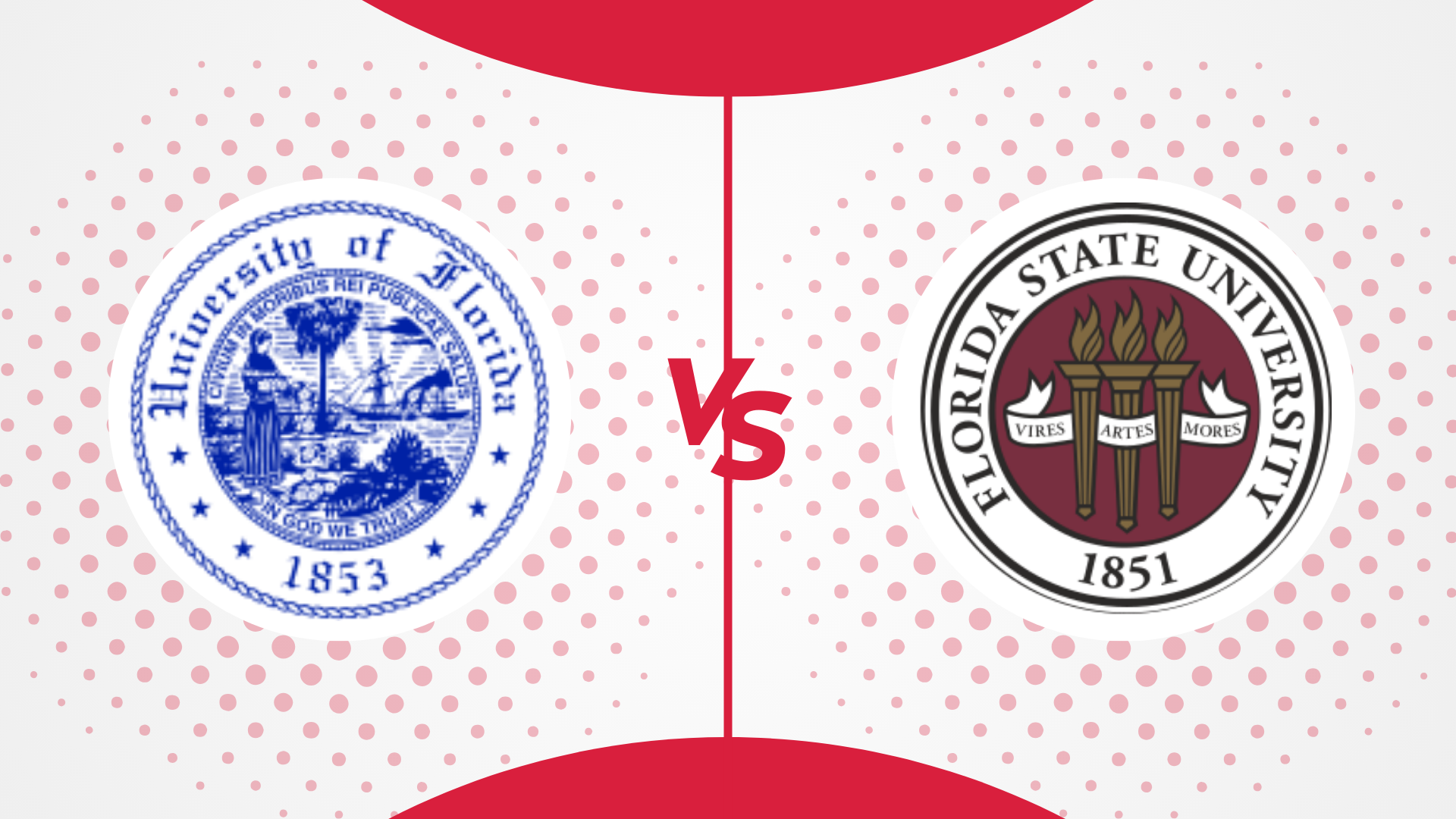
University of Florida vs Florida State University: Which One is Better For You in 2024
June 28, 2024 -

NYU vs Columbia: Which Is Better In 2024?
June 28, 2024 -

Princeton vs Columbia: Which Is Better In 2024?
June 28, 2024 -

NYU vs Cornell: Which One Is Better In 2024?
June 28, 2024 -

Boston University vs Northeastern: Which one is best in 2024
June 28, 2024 -

NYU vs UCLA: Which Is Better For You In 2024?
June 28, 2024
